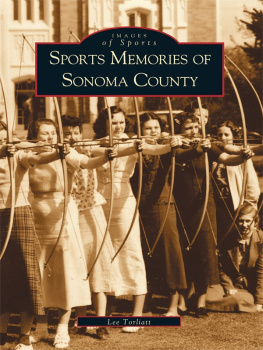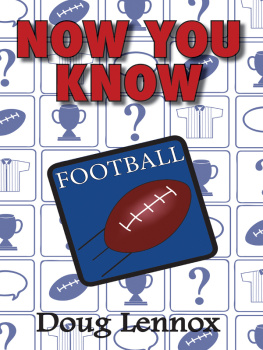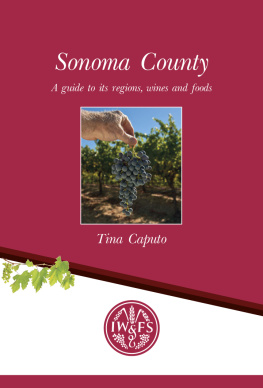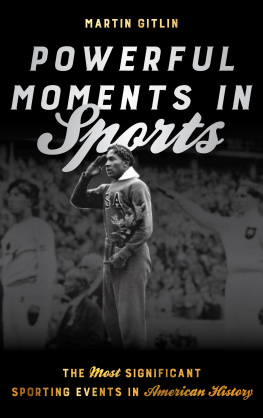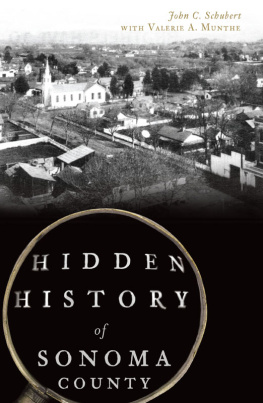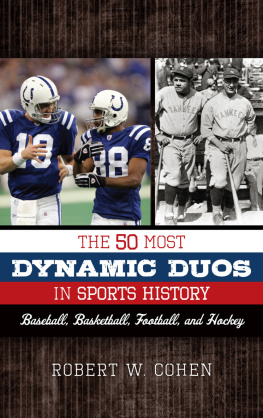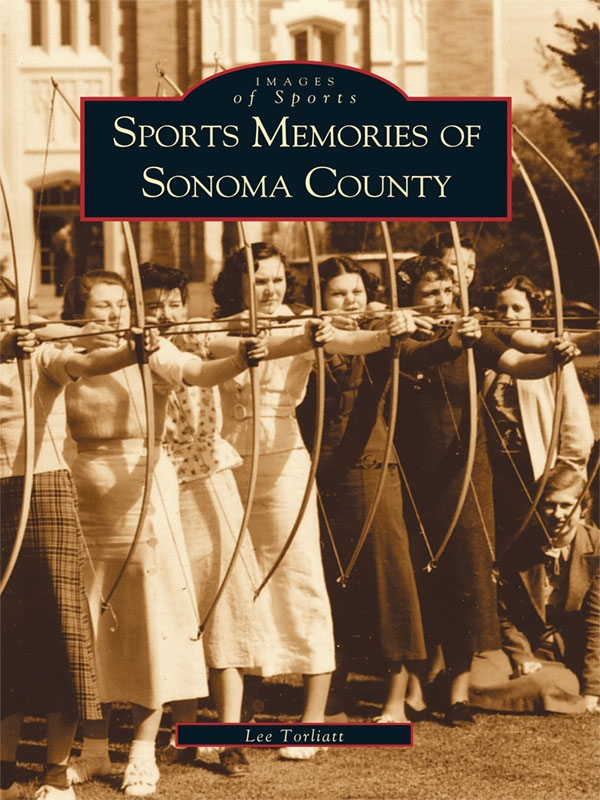One
THE EARLY DAYS
Sport can be defined as any activity that gives enjoyment or recreation. It can require more or less vigorous bodily exertion carried on according to some set of rules. Settlers from many parts of the world brought traditional diversions with them to Sonoma County. These included horse racing, boxing, bicycling, baseball, football, basketball, track, tennis, and hunting and fishing. Santa Rosa had a track for horse racing in 1857, and a Jockey Club was formed in 1860. Healdsburg and Cloverdale offered spring races in 1861, featuring some fine two-year-old quarterstock. By 1869, a mile course was being built on Mr. Bailhaches land near Healdsburg. A large crowd showed up at the Agricultural Park Course in Petaluma in September 1876 to watch W.V. Smith in a 50-mile race against time. Santa Rosa boasted a covered grandstand with a capacity for 500 by 1880. Anteeo, a trotting stallion from the stables of Isaac DeTurk, appeared at tracks in many parts of California. The famed pacer, Lou Dillon, bred in Santa Rosa, became the first harness horse to cover a mile track in less than two minutes.
There was early interest in boxing. In 1863, two years before the Marquis of Queensbury provided the world with a set of rules for the sport, two combatants battled on the banks of the Petaluma Creek south of town.
Johnny Lazarus and Peter Daley agreed to maul and be mauled until the word quit, for a stake of $2,000. After some 40 rounds, during which...Johnny got in lightly three or four times on Petes kissers, peepers, and smeller, causing the claret to circulate somewhat freely, and Petes returning the compliment by punching Johnny on the conk, in the bread basket, etc... the umpires deciding Daley to be the winner.
Healdsburg fans cheered hometown-boy Chris Merchant, the amateur heavyweight champion of the Pacific Coast, in the 1870s.
Santa Rosas first bicycling club, the Wheelmen, took part in cross-country expeditions and Bay Area racing events from the 1880s. The Noonan brothers, Henry and Ben, and Jesse Williamson competed in Bay Area events. Proving the superiority of man over machines, Ben Noonan raced a train from Santa Rosa to Sebastopol, breezing in the winner in 16 minutes. By 1895, in addition to road runs, Healdsburgs Wheelmen held races at Mathesons Park, which drew up to 500 fans but there was no more than a $1,000 wagered on any of the races.
Baseball was being played in America by the 1830s, and Santa Rosa fielded a team in 1861. In the 1870s, a Santa Rosa team took on opponents from other towns, and the games got pretty wild. In one case, the Santa Rosa Olympics outslugged Petaluma 57 to 46. One Sunday around 1890, Healdsburg players boarded a band wagon pulled by a crack pair of horses driven by J. C. OConnor. When a front wheel came off, the horses bolted and the players ended up in the street in front of the Occidental Hotel. With cuts, aches, pains, and blood in their eyes, the players marched onto the field and upended their keen contenders...to the tune of 7 to 6. The headline in the Santa Rosa newspaper read, HEALDSBURG BEAT COUNTY SEATERS ON CRUTCHES.
Charles Wolcott was credited with adding a catchers mask and glove to the Healdsburg teams equipment. Before the arrival of the protective gear, the catcher stood far back of the plate and caught the ball on the bounce.
Teams came in by train to play the locals, and there were numerous special events. A National League game was played in Santa Rosa in 1897 and a few years later the Boston Bloomer Girls lost to the Santa Rosa mens team, 13-8. Healdsburg played Sebastopol and other opponents in the 1890s. Petaluma had teams called the Maroons, Alerts, and Merchants.
Early football seemed to include quite a bit of rugby. In some cases, five points were awarded for touchdowns, the standard reward for a try or goal in rugby. Santa Rosa fielded its first football team at Pacific Methodist College in the early 1880s, and by early 1893 Petaluma High School proudly applied a 24-0 coat of whitewash to Santa Rosa. The Rose City coach, high school principal Clement C. Young, became Californias governor but the team did not do as well, failing to win a game. Since home field was a vacant lot on E Street with no bleachers, fans stood or sat on the ground.
In late 1893, Petaluma hosted a team from San Francisco and got the better of an unfinished game. Following an injury and the desire of the visiting team to catch the 4:10 train back to San Francisco, the game was declared closed. It was said Petaluma had its best teams in 1892 and 1893.
The spirit of high school football extended into the broader community. A goodly number of young gentlemen met at the office of Geo. C. Codding in January 1893 to form a football club. Suggestions for a team mascot included a rooster, a cross-eyed pig, and a yellow dog. By Thanksgiving 1894, Healdsburg was eagerly awaiting its Thanksgiving football game with Petaluma.
When Santa Rosa High School moved into a new building in 1896, it had 250 students, 6 teachers, and 2 sports, football and track. A track field day at the Pierce Brothers racetrack in Santa Rosa in 1897 attracted high school teams from Petaluma, Healdsburg, Ukiah, and Santa Rosa. Events included hurdles, a mile walk, a mile run, dashes, field events, and bicycle races. When three runners finished in a bunch in the 100-yard dash, they were required to run it a second time.
Women played some of the earliest basketball games. There were girls teams in Petaluma and Santa Rosa in 1897.
Sports bickering between Santa Rosa and Petaluma goes back at least to the early 1890s. A Petaluma-Santa Rosa high school football game, scheduled for December 31, 1892, was delayed when Santa Rosa asked for a postponement. After more delays, Petaluma sources did little to conceal their contempt, concluding, Santa Rosa High School is not at all prepared to cope with Petaluma high school football.
Complaints aside, when the teams finally played in mid-January 1893, the Petaluma newspaper proudly clucked that a 24-0 Coat of Whitewash had been applied to the Santa Rosans.Players suffered on a slimy and muddy field but were served an elegant banquet at the Congregation Church presented by the young ladies of the Petaluma High School and other assistants.
By 1893, Petaluma had three wins over their northern rivals, and one writer wondered whether it is the richness of our milk, the pureness of our homemade flour, or the strength of the Petaluma cheese that made Petaluma athletes superior.

